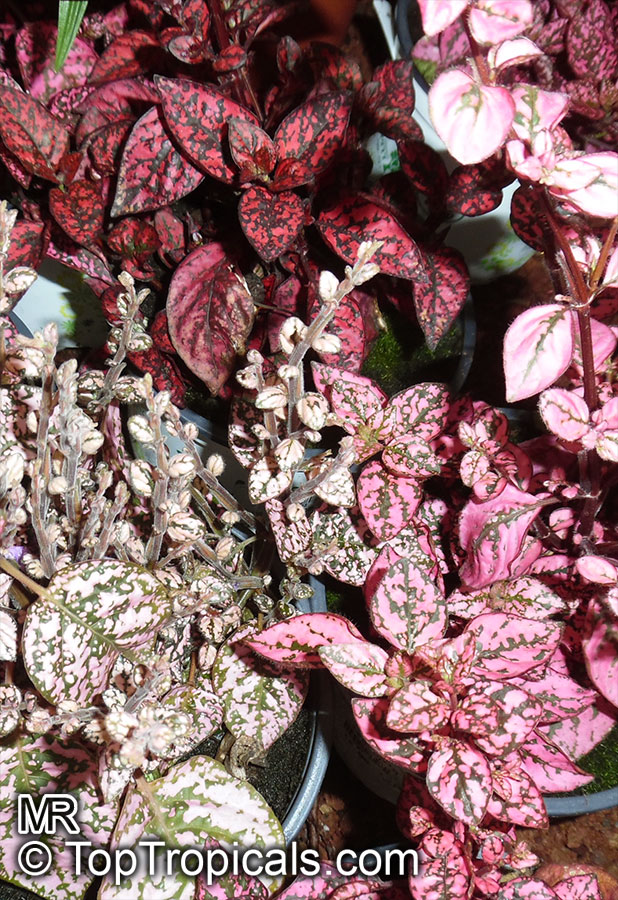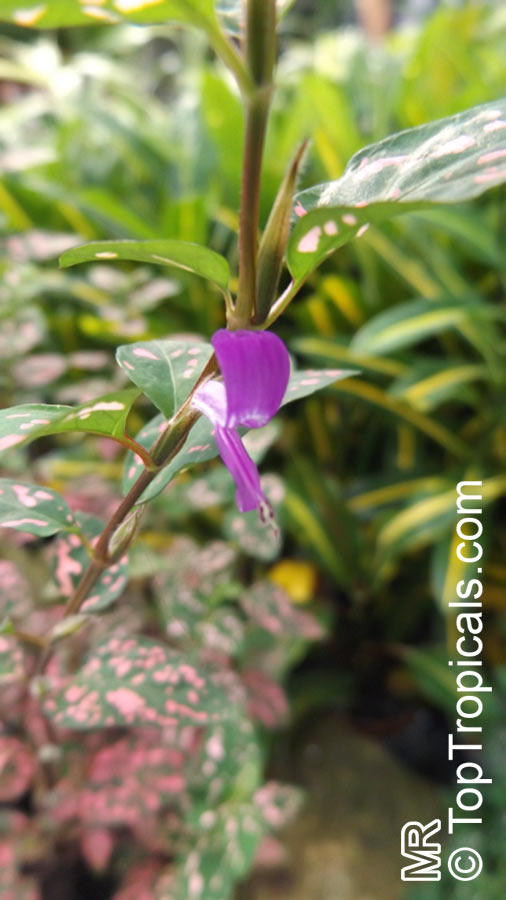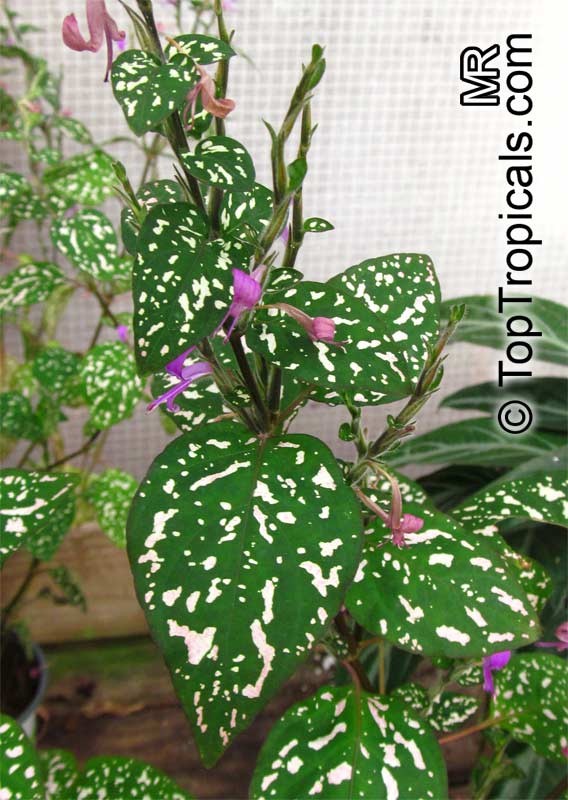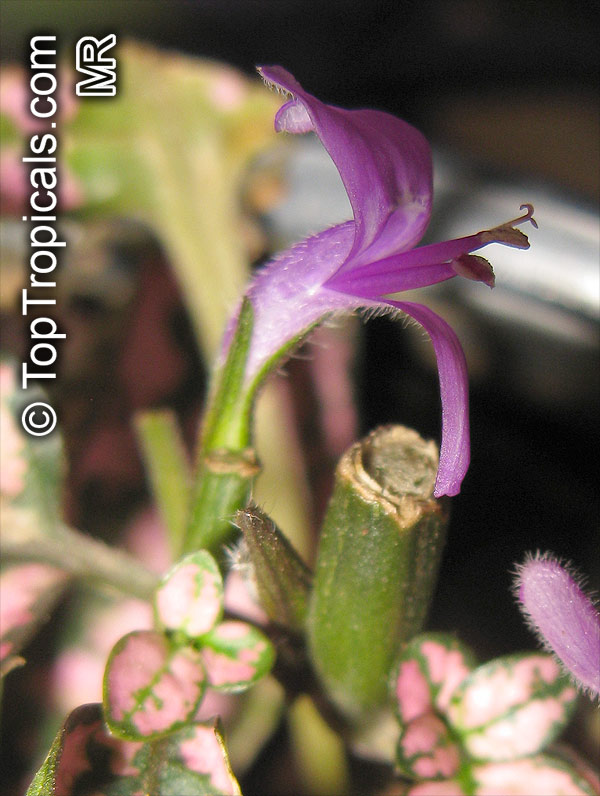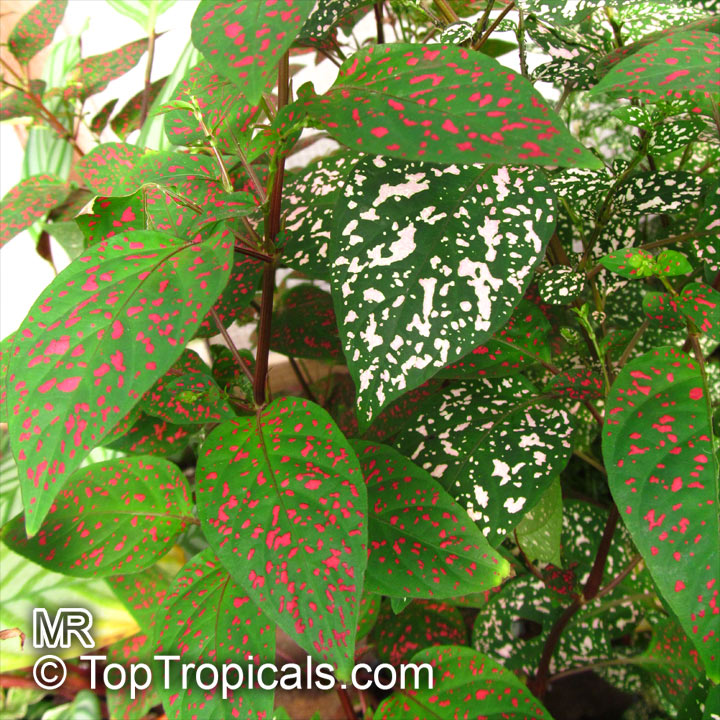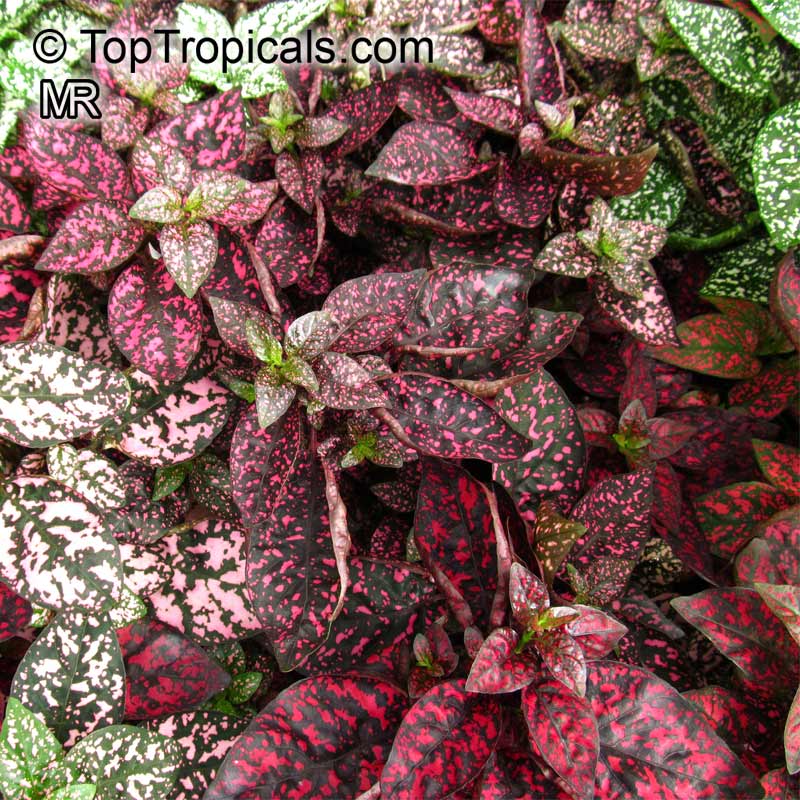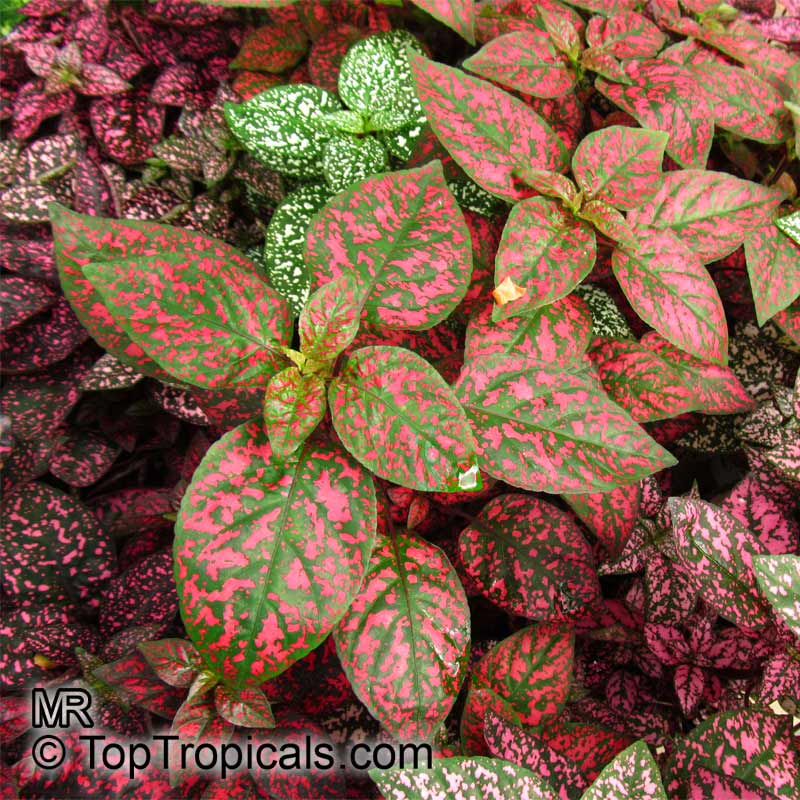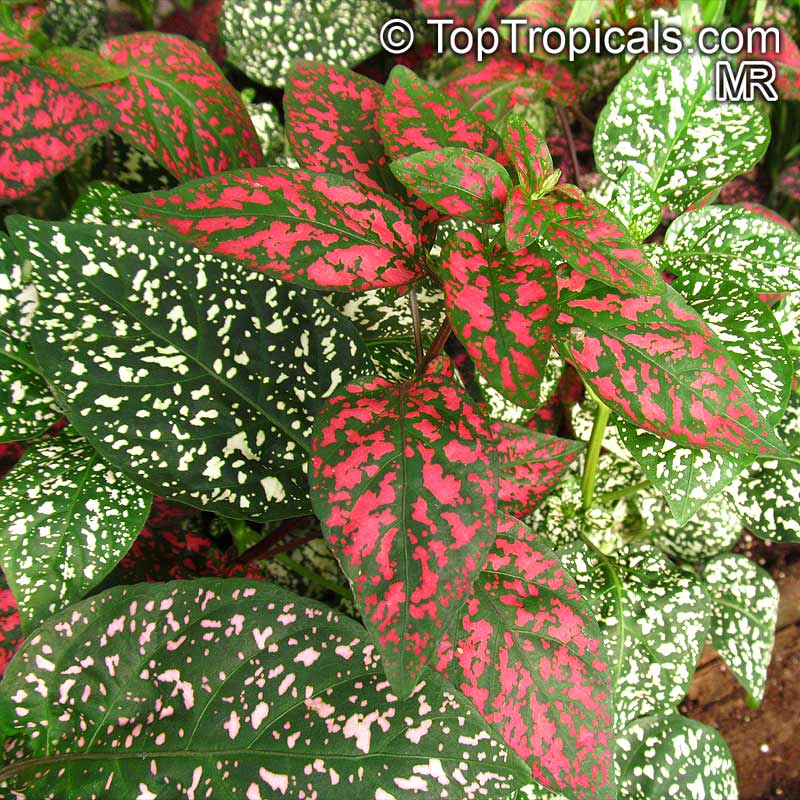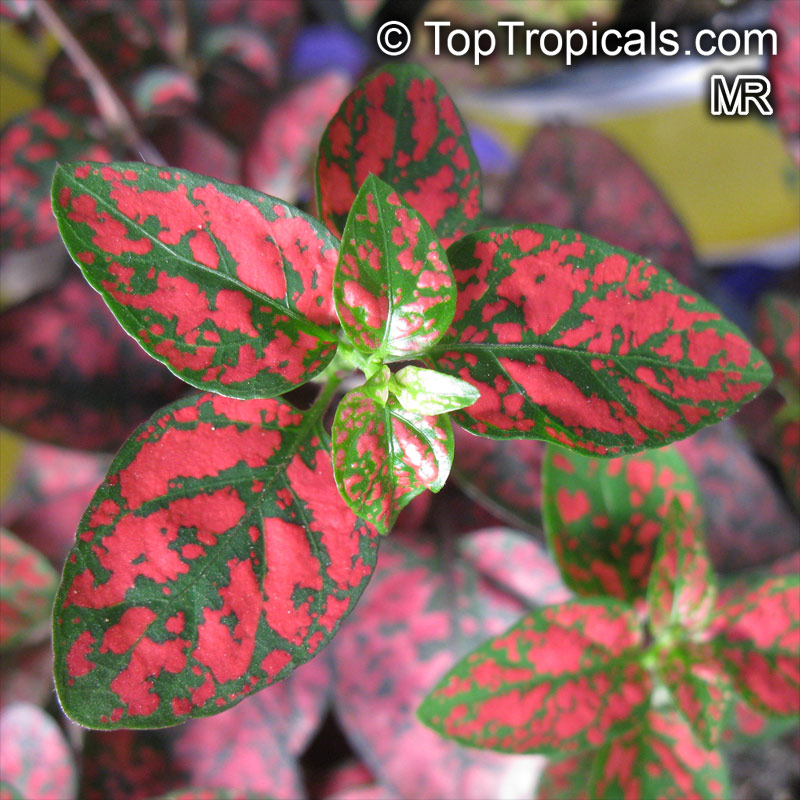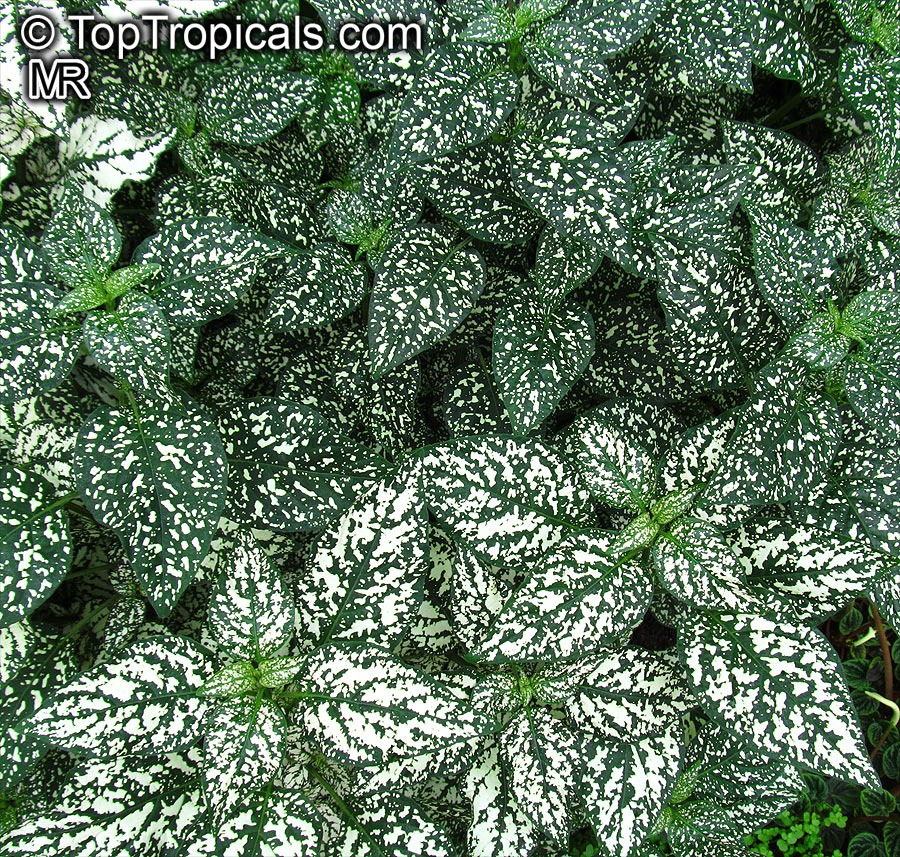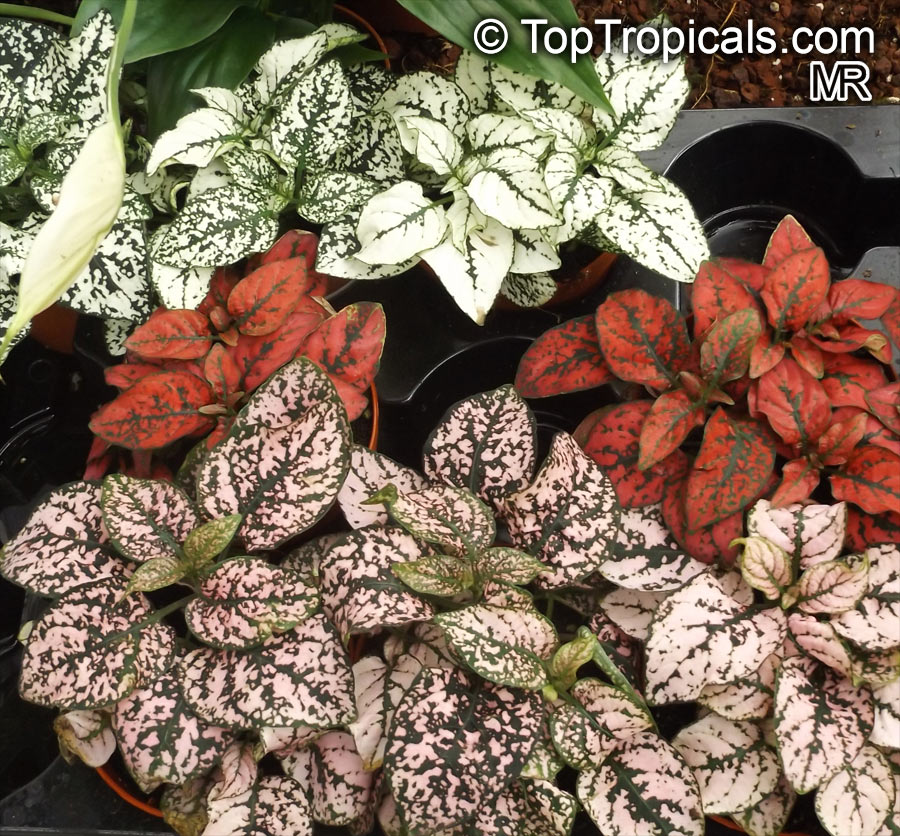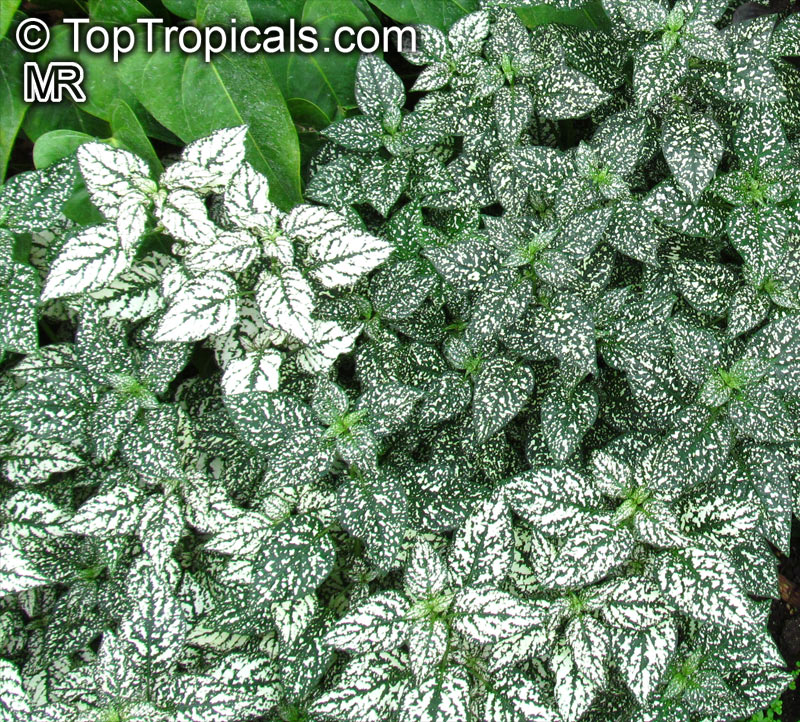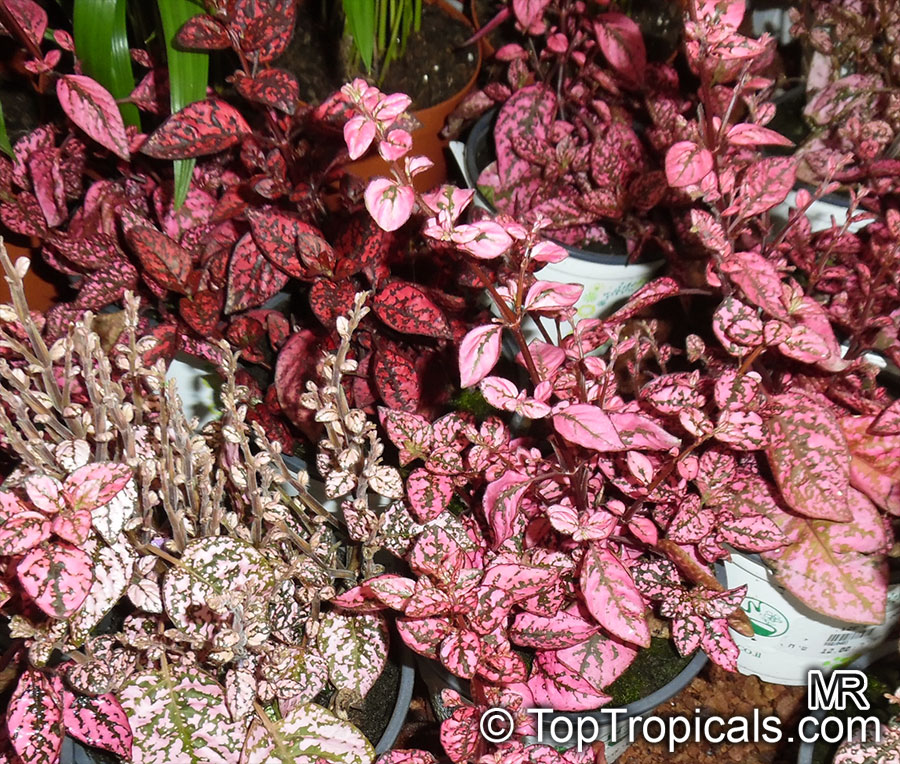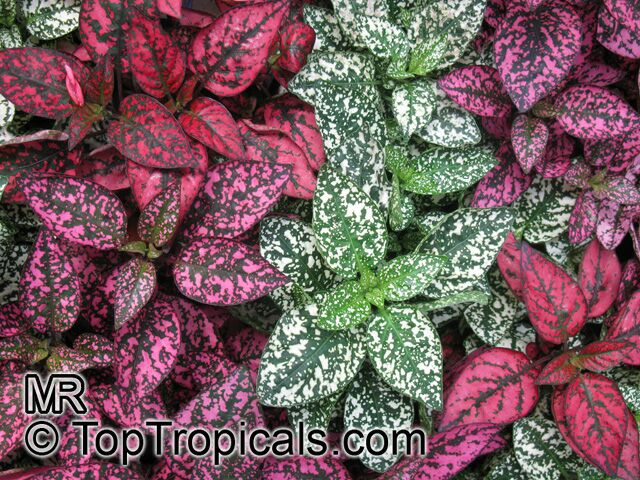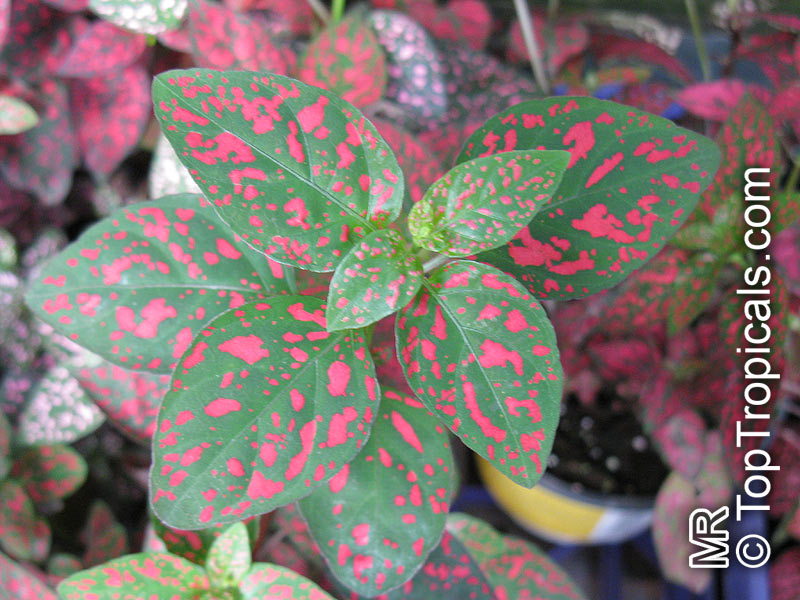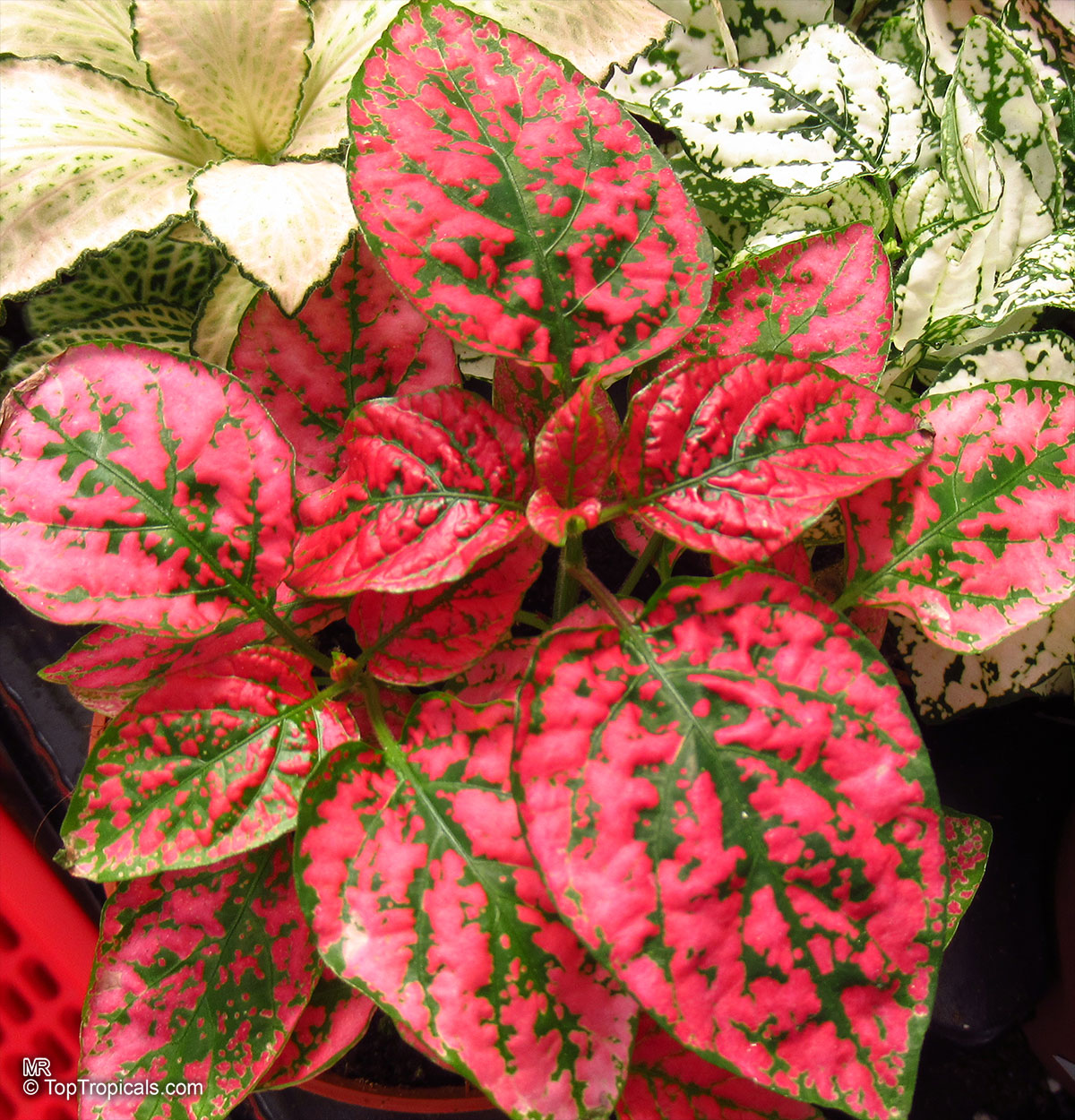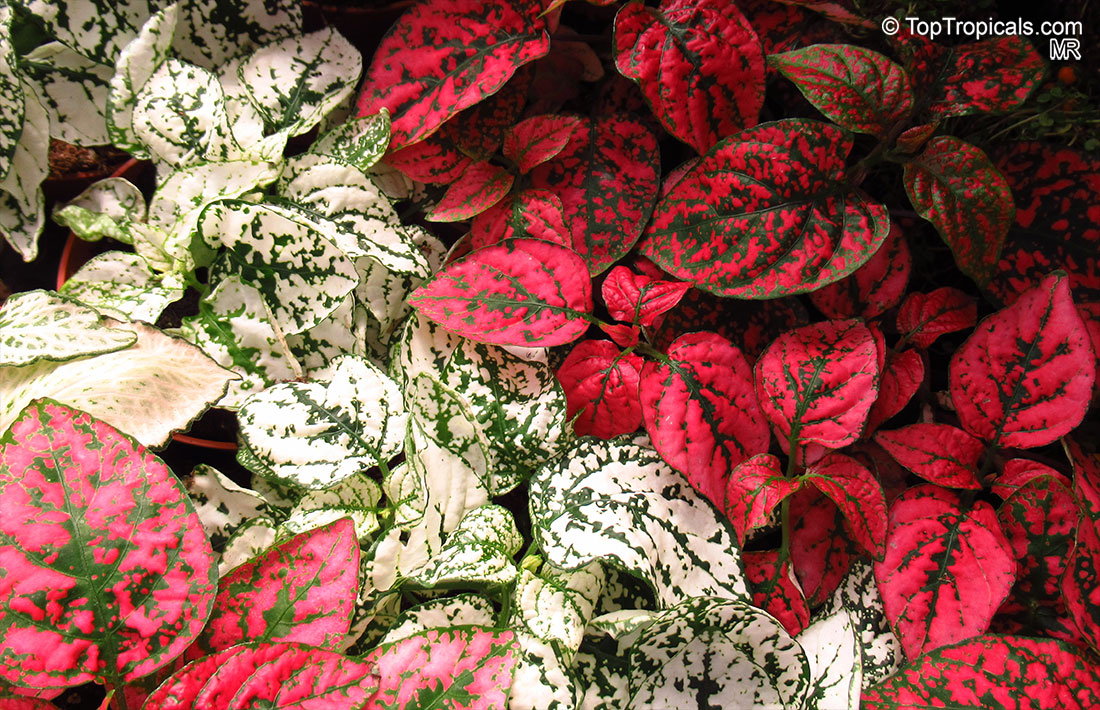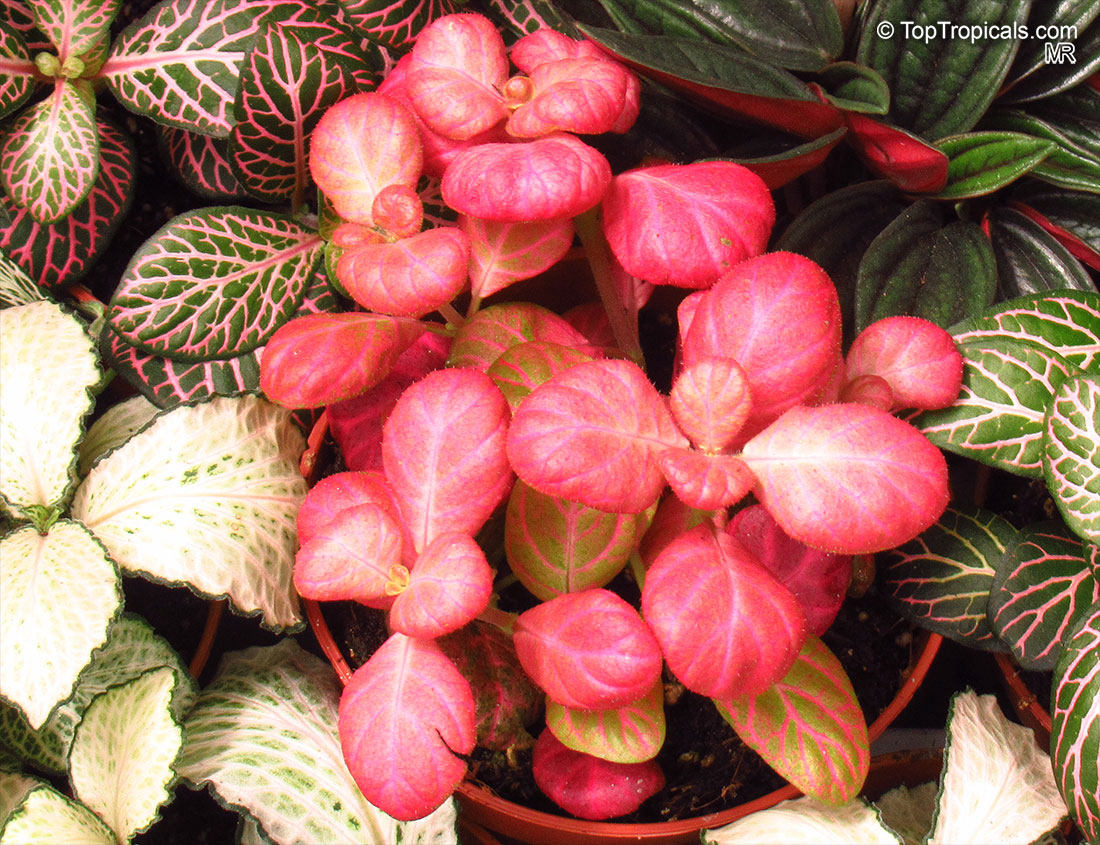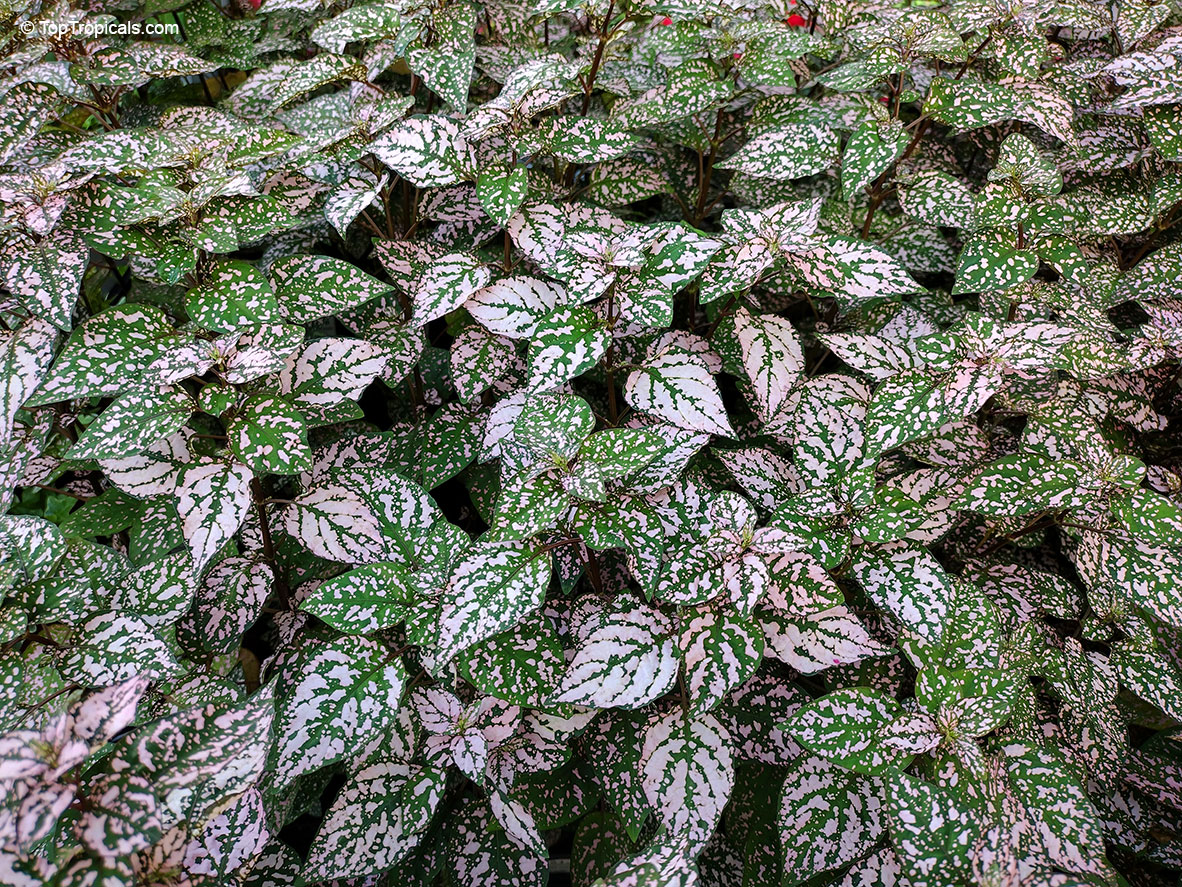Hypoestes phyllostachya (Polka Dot plant)
Top Tropicals Plant Encyclopedia
Botanical names: Hypoestes phyllostachya, Hypoestes sanguinolenta
Common name: Polka Dot plant
Family: Acanthaceae
Origin: Madagascar





Hypoestes phyllostachya (Polka Dot) plants are relatively easy to grow in small pots and like to be slightly pot bound. They will remain compact and will stay healthy with frequent feedings of liquid fertilizer during the warm weather months. In climates where winter temperatures drop below 40 F, moving the plant indoors is the best solution. They can handle full sun indoors, but be sure to keep them at least from drafts and cold air from a window. Polka Dots are great for rock gardens, ground covers, and as houseplants for brightening up a shady spot. The bright colors of the leaves and flowers make them a great ornamental plant.
Overall, Hypoestes phyllostachya is an easy-to-care-for, low-maintenance, and beautiful plant that can be grown indoors or outdoors in USDA Zones 9-11. With its spectacular foliage and vibrant splashes of pink, it's no wonder that the Polka Dot plant is such a popular ornamental choice.
Everything to know about growing and caring for this plant is that it requires bright light but not full sun, a humid environment, and consistent watering with a well-draining soil. It also benefits from misting every so often. Be sure to feed it with liquid fertilizer regularly during the warmer months. In cold regions, it's best to pot the Polka Dot plant and move it indoors to help protect it from temperatures below 40 F. Polka dots can tend to get leggy with age, so keep it pinched back. With the proper growing conditions, you'll soon be enjoying the colorful foliage and delicate pink flowers of a Polka Dot plant!
